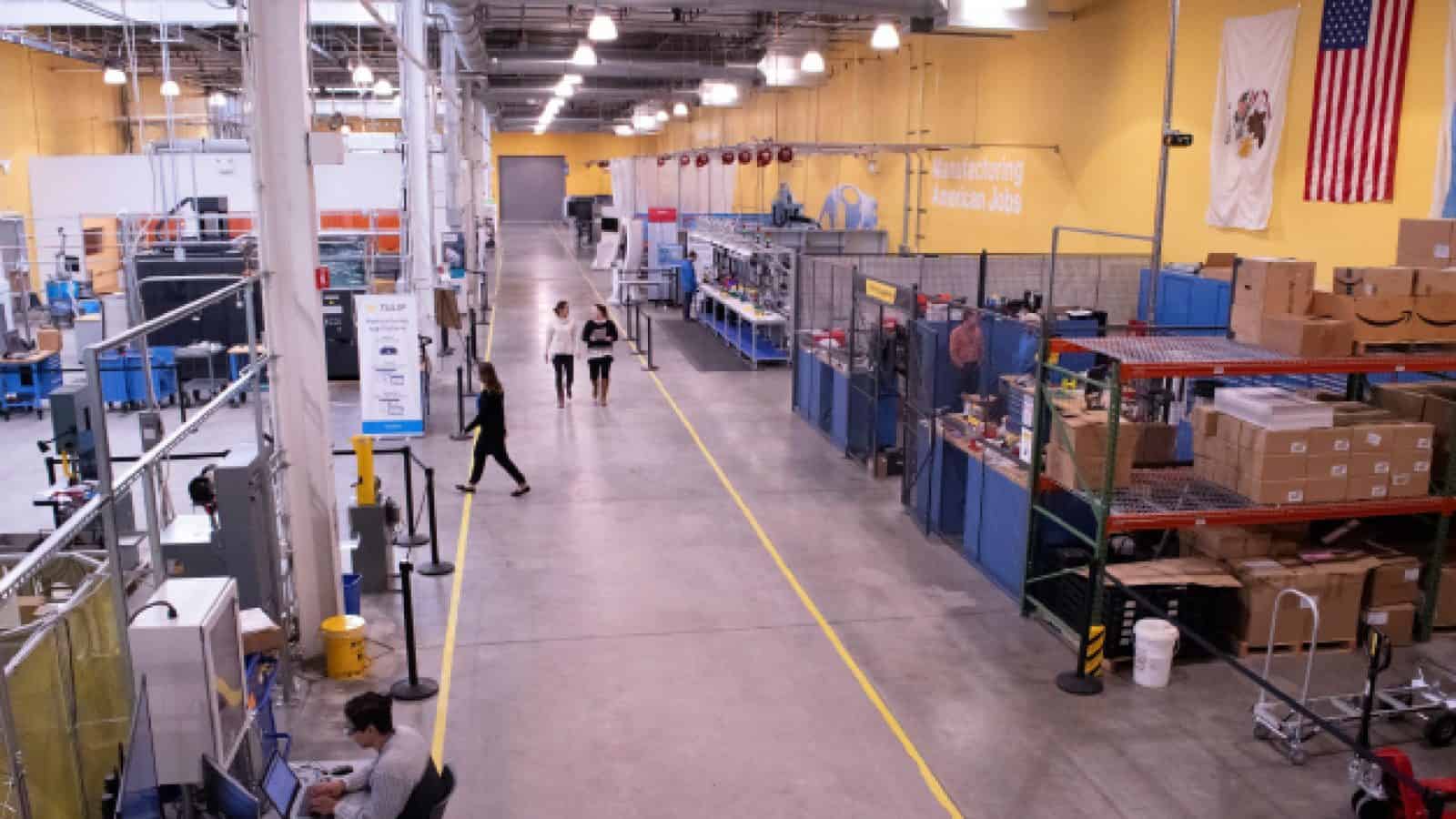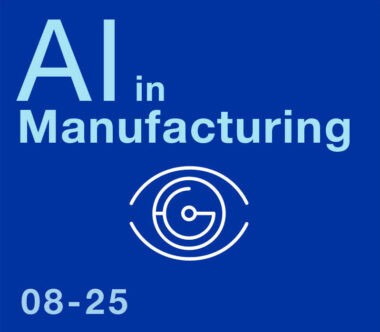How the C-suite Can Drive Results for AI Success

For companies to achieve truly transformative generative AI, they need six key pillars.
TAKEAWAYS:
● Your organization likely has far more GenAI ideas than available resources; a vital component is a control tower for oversight, focus, and governance.
● Data maturity, strategic alliances, and talent are also essential elements of a forward-thinking AI strategy, beyond the technology itself.
● Leaders must resist the impulse to fit GenAI into existing processes and business models and instead reimagine them entirely.
You likely have hundreds of generative AI (GenAI) use cases and may have seen some early success with prototypes. Perhaps you also have the sandboxes for controlled experiments, buy-in from key executives, and a healthy budget for testing and development. Yet, after a year, you may find that you are still struggling to move quickly enough to mitigate competitive risks and confidently turn possibilities into opportunities—to truly transform your business.
Following another strangely resilient yet uncertain economic year, C-suites and boards in the US expect to see cost savings, greater efficiencies, and added revenue from GenAI implementation, according to a recent EY AI survey. To some extent, GenAI infrastructure and processes resemble those used for regular artificial intelligence (AI), which some companies have leveraged for decades. However, these often involve more basic automation projects, and important distinctions regarding GenAI must be addressed:
- The sourcing, management, and preconditioning of data vital for training GenAI algorithms and creating outputs for different stakeholder groups;
- Ethical frameworks that provide guardrails for a technology whose upsides and downsides are not yet fully defined;
- Partner ecosystems to enable organizations to cost-effectively keep pace with the future and gain additional data sets to enrich their large language models and knowledge repositories; and
- Change management for employees who are concerned about how GenAI will impact their careers and responsibilities.
Success can be found in the narrow, overlapping center of these functional areas—and the payoff for those who reach the center first can be enormous. We see that truly transformative GenAI capabilities are built on six pillars.
Pillar 1: Establish an AI Control Tower
A control tower effectively oversees use cases and investments across the organization, helping to set priorities and avoid duplicated efforts.
Voluminous GenAI use cases all compete for time, attention, and resources. Many companies are wasting money on duplicated efforts, some of which exist in shadowy corners without proper governance, creating potential reputational risks. Companies may not even know where all their AI models are deployed. This blind spot will become increasingly threatening as regulations take shape in the US and globally, particularly impacting industries such as financial services, energy, and health care.
As a catalyst for the new age of GenAI, a control tower—not individual functions—relentlessly focuses on deriving value from AI and GenAI. This approach ensures that time, money, and effort are spent wisely, efficiently channeling enthusiasm in positive directions while establishing oversight and guardrails. Many AI and GenAI solutions exhibit common patterns and can benefit from reusable assets that accelerate time to value and reduce costs. Without a control tower, different groups across an enterprise risk building very similar solutions from scratch for various use cases. The control tower effectively governs organizational investments and value creation by identifying patterns across various use cases that align with business needs and prioritizing the development of GenAI solutions.
Pillar 2: Reimagine Future Business Models and Functions
C-suites are increasingly focused on how technology integrates into current operations and business models rather than how it will redefine the future.
It’s natural to try to fit a new advancement into existing frameworks. During the Industrial Revolution, it took time for planners to redesign cities for automobiles instead of horses, and to rethink manufacturing plant designs after steam engines became obsolete. GenAI is poised to be equally transformative.
Consider procurement. You could automate the first five steps of reviewing requests for proposals: a GPT generates a content comparison that highlights which proposals meet the requirements and how they differ, with references pointing to page numbers within each document. Instead of spending four weeks on redlining, you could reduce this to one week—a significant gain in efficiency for a process that, while important, is not core to your organization’s mission.
The truly transformative impact lies in completely reimagining front office operations, rather than merely streamlining back office processes. GenAI unlocks new products, services, and business models that can easily be overlooked if approached with a robotic process automation mindset. This reimagining may include creating new products and features enabled by GenAI, offering them through pay-as-you-go service subscription models, selling directly to consumers instead of via intermediaries, and leveraging consumer data for insights—potentially even selling that data as a separate revenue stream. Amidst all this change, one timeless truth remains: if you don’t innovate first, your competitors will.
Pillar 3: Ensure Confidence in AI
The initial excitement surrounding GenAI may fade during the first few sprints after deployment, as the transformative potential confronts the messy reality. Continuous testing and governance are essential.
Does your GPT provide perplexing answers, veer down incorrect paths, or even “hallucinate”? Does it have access to the right amount of data—or perhaps too much?
In control towers, processes and rules must govern the creation and maintenance of algorithms and models. This includes mitigating bias, enforcing fairness, and ensuring explainability and transparency from the moment the AI model is created through its ongoing management. From the outset, data security and integrity are crucial. Often, the type of data required for GenAI differs from that used in typical AI; it does not exist in neat rows and tables but rather in chat logs, emails, surveys, and more, necessitating far greater preconditioning.
Leaders in a control tower also must define their ethical compass concerning GenAI and its alignment with company values. As a consumer, would you feel better or worse knowing that a GenAI model was guiding your investment decisions or healthcare diagnoses? Organizations must address these questions before deploying GenAI, not after. EY leaders have oriented the company’s AI efforts around fairness, accountability, and reliability. These principles are not just words; each corresponds to metrics that measure the confidence of any particular solution we deploy. The EY organization, ServiceNow, and others are assisting companies in defining, enforcing, and testing their AI principles.
It may seem paradoxical, but keeping humans in the loop is essential for building confidence in GenAI. Are the individuals who will ultimately be affected by GenAI included in its design, development, testing, and deployment? One effective approach is reinforcement learning: people play a crucial role in training the models and evaluating the outputs of a GenAI chatbot or algorithm, helping it discern what is useful and what is not. Without this involvement, the efficacy of the models diminishes. Furthermore, it is vital to have mechanisms in place to allow these individuals to flag issues and provide feedback on what isn’t working well, which responses are incorrect, and which outcomes do not align with business needs.
GenAI algorithms and outputs must undergo rigorous scrutiny. Consider the chatbots designed for specific purposes that can be manipulated into generating hate speech, disclosing intellectual property, or informing customers about nonexistent company policies. Algorithms tailored for particular tasks can also evolve in ways that may appear mysterious to outsiders, lacking “explainability.” Red teams—resources that assume adversarial roles to challenge AI—are crucial for validating these efforts through independent monitoring.
The EY.ai Confidence Index provides a framework to help organizations navigate these pitfalls, enhancing the reliability and explainability of responsible AI to support better decision-making and more efficient operations.
Pillar 4: Address Talent and Tech Gaps
The buzz surrounding GenAI may wane in the first few sprints after deployment, as its transformative potential meets the complexities of reality. Continuous testing and governance are essential.
A key takeaway from launching our internal GenAI model to 400,000 EY employees was the importance of providing training alongside tools. This finding was further reinforced by the results of the EY AI Anxiety in Business survey, which revealed that 80 percent of employees would feel more comfortable with AI if they received training, yet 73 percent reported not receiving the necessary coaching. The survey indicates that employees are already using these tools at work, and desire a deeper understanding of responsible AI practices.
What will help people feel more comfortable using AI at work?
On the technology side, many organizations grapple with a familiar question: Should I build what I need, buy it, or pursue a combination of the two—such as augmenting existing software or building on established platforms using my intellectual property? There’s no substitute for debate and planning, even in an unsettled technology landscape. You might decide to hold off on investing in financial GenAI applications because you believe your current enterprise resource planning systems will eventually incorporate that functionality. However, it may be worthwhile to pursue GenAI tools customized to your specific needs through the product development lifecycle. This discussion is not solely about identifying gaps exist but also about the methods for addressing them.
Pillar 5: Develop an Ecosystem of Alliances
AI is a complex technology that impacts every level of an organization. To stay ahead of the curve—or even to reach the median level of maturity—organizations need to establish partnerships.
Many organizations tend to focus on yesterday’s teams while considering how they will tackle tomorrow’s challenges. It’s important to recognize that a different workforce and new ways of thinking will be necessary to address business needs beyond today’s core operations. A rapidly changing world demands new solutions, fresh data sets, and capabilities that few companies can provide internally. Currently, plug-and-play and single-point systems that automatically generate solutions based on unique needs and data sets don’t exist; features that seemed innovative last year can quickly become outdated.
A robust ecosystem of alliances enables your company to quickly and flexibly fill those gaps while adapting to the evolving landscape. Defining a strategy for what you need and how to expedite it is crucial—whether your organization is a pharmaceutical giant using highly sensitive drug trial data or a consumer products company seeking greater automation for its service agents. Is proprietary data your core market differentiator that you will use to train a model? This question is vital, as the strategic path becomes clearer if your proprietary data provide a competitive advantage.
Consider alliances in four categories:
- Technology partners: Rely on them for guidance, innovation, and even experimental funding.
- Academics: These partners can be invaluable for hypothesis testing, research, guidance, and thought leadership.
- Professional services organizations: They can help you navigate the entire landscape, identify strategies and sources of value, and even assist in building solutions to capitalize on that value.
- Data partners: Your sector as a whole may benefit more from a data consortium, particularly in areas that do not specifically differentiate your organization. (For example, consider patient data across health systems, while being mindful of privacy regulations.)
Pillar 6: Drive Focused Data Maturity to Be AI-Ready
Data quality is more important than ever; however, if you wait until all your data are perfect and trusted before testing your use cases, you may be waiting indefinitely.
Focused data maturity is key: not every piece of data needs to be pristine to be included in your GPT. This distinction is crucial as we navigate regulations.
You need an enterprise-wide, fit-for-purpose data strategy that is governed tightly by how data will be used. For example, if you plan to have a GenAI application that customers will use to obtain information about products, that product data will need to be highly managed and governed, while other data may fall outside that scope. Your data strategy should guide your investments effectively, targeting your highest priorities rather than attempting to “boil your data ocean.” Here are the key needs to address:
- Accessibility at scale: A high volume of historical information should be available for exploration and production use with fast processing.
- Visibility: The ability to understand the data, both technically and in a business context, while easily locating data across systems and sources.
- Timeliness: Up-to-date data files with reasonable data latency, providing what’s needed for each use case (for example, in real time or in batches).
- Openness: Support for multiple file types and formats (including text, numbers, and images) using consistent tools across the platform.
- Reliability: Data pipelines that minimize breakage, limit the amount of missing data, and maintain consistency from one update to the next.
- Expansiveness: Consistency across the global enterprise, enabling connections between customers and products across different regions and business units.
- Trust and security: The ability to execute AI use cases responsibly with data that are secured and accessible only to those who need it.
Summary
With an AI control tower, you empower everyone to contribute while designating one group to drive focus, oversight, and business alignment for reusable assets, all while emphasizing responsible AI practices. Technology is just one piece of the puzzle: you also must upskill personnel, secure alliance partnerships, and prepare your data for AI. Never lose sight of how you must reimagine your organization for tomorrow, not just today. M
About the authors:

Traci Gusher is EY Americas AI and data leader.

Matthias Loh is EY Americas FSO technology consulting leader.

